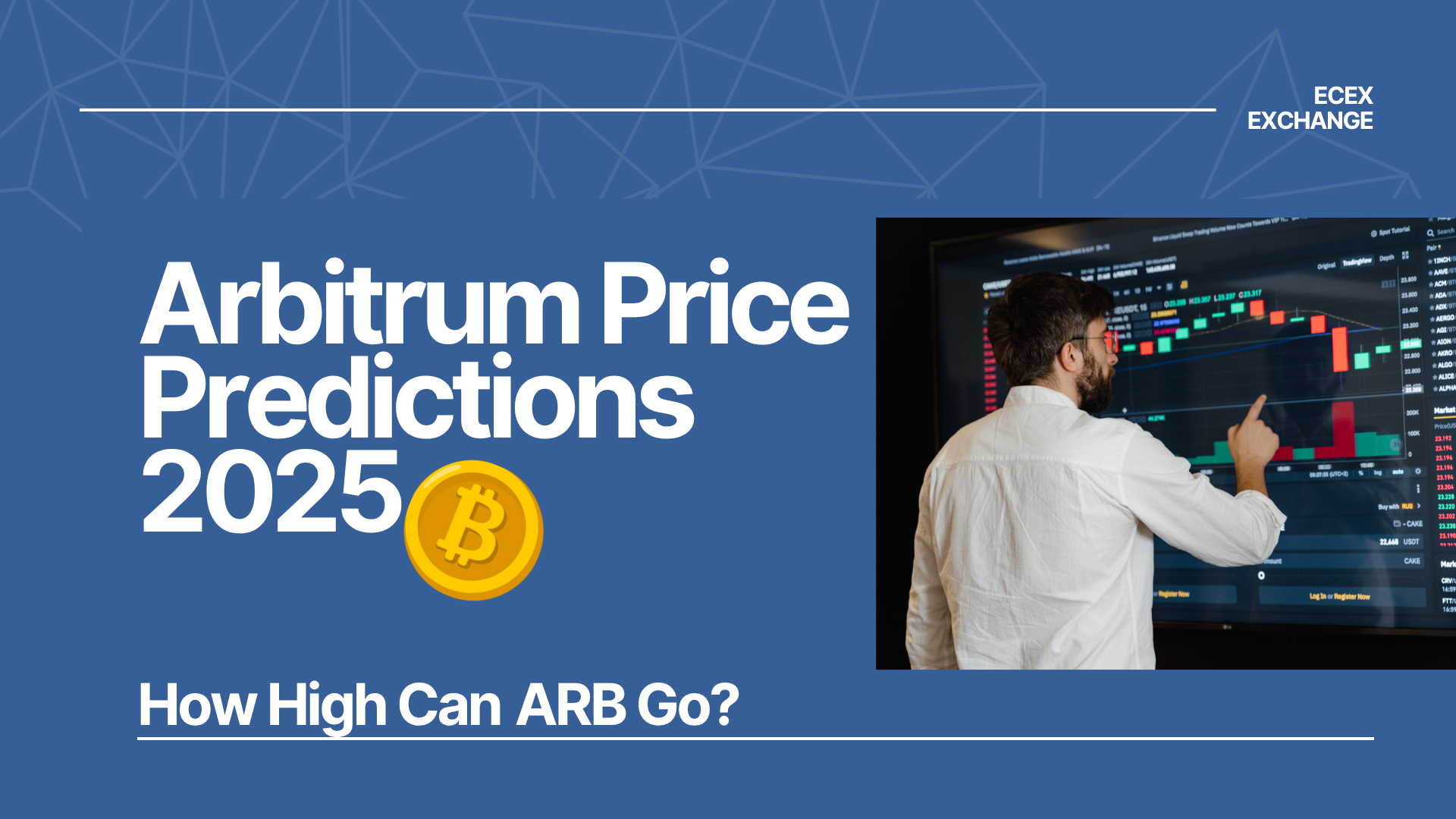
Barely 18 months after its airdrop, Arbitrum’s ARB token sits at $0.44 with a $2.2 billion market cap—good for No. 48 on CoinMarketCap’s league table.CoinMarketCap The Layer‑2 network itself secures more value than any competitor: $16 billion TVL and climbing, thanks to low fees and a growing roll‑up ecosystem.L2BEAT But can those fundamentals propel ARB toward—or beyond—the coveted $1 level in 2025? Below we synthesise forecasts from three respected price‑model engines, then weigh the catalysts and risks that will steer the token’s trajectory.
Quick Price‑Prediction Snapshot
| Source | 2025 Low | 2025 High | Methodology |
| CoinCodex | $0.30 | $0.44 | Technical‑indicator ensemble coincodex.com |
| DigitalCoinPrice | $0.39 | $0.96 | Machine‑learning trend extrapolation DigitalCoinPrice |
| WalletInvestor | $0.40 | $0.49 | ARIMA time‑series & volatility bands Walletinvestor.com |
Consensus puts ARB’s base‑case band around $0.30‑$0.60, with a bull‑case skirting $0.96 if liquidity and user metrics keep improving.
What’s Driving the Models?
1. TVL Leadership
Arbitrum controls ≈ 43 % of all Layer‑2 value—more than Optimism and Base combined. A higher TVL often correlates with stronger token demand because governance voters stake ARB to influence incentives and upgrade budgets.
2. DAO Treasury & Grants
The Arbitrum DAO sits on 700 million ARB earmarked for ecosystem grants. Scheduled dispersals can create short‑term supply overhang but long‑term network effects. Analysts watch proposal cadence to gauge sell pressure.
3. Layer‑3 (Orbit) Expansion
Projects like Kinto and Xai are spinning up application‑specific chains using Arbitrum Orbit tech. These “L3s” pay fees in ETH yet drive activity back to Arbitrum’s bridge, potentially boosting ARB’s governance premium.
4. Staking Roadmap
A draft “ARB staking” proposal would redirect a slice of sequencer revenue to token lockers. If passed, ARB could gain a native yield—a valuation catalyst DigitalCoinPrice cites in its upside scenario.
Catalysts That Could Push ARB Above $1
- Sequencer fee‑share activation—modeled to inject $50–$70 million annualised yield to stakers.
- Regulated ETF exposure—VanEck hinted its future “L2 Leaders” ETN might allocate up to 8 % in ARB.
- Corporate bridge adoption—Visa’s on‑chain settlement pilot already uses the Arbitrum Nitro stack for internal transfers.
If two of the three play out, DigitalCoinPrice’s $0.96 top end could look conservative.
Headwinds to Watch
| Risk | Impact | Mitigation |
| Token unlocks | 1.1 billion ARB vest through March 2026; could double circulating supply | DAO can throttle cliff emissions into linear streams |
| Fee competition | Base and zkSync Era offer <$0.005 swaps | Arbitrum Stylus upgrade adds Rust to cut gas 10× |
| Regulatory overhang | L2 tokens lack U.S. clarity | DAO treasury already geoblocks U.S. airdrops |
CoinCodex’s lower‑bound call ($0.30) essentially prices in a scenario where these risks outweigh growth.
On‑Chain Momentum Check
| Metric (Jul 16 2025) | 12‑Month Change | Source |
| Daily L2 transactions | 2.3 million ↗ 62 % | Arbiscan |
| Unique wallets | 16.7 million ↗ 48 % | Nansen |
| Average swap fee | $0.013 ↘ 85 % (post‑Dencun blobs) | Dune @L2Fees |
| TVL | $16.1 billion ↗ 27 % | L2Beat |
Positive slopes across activity, wallets and fees give quantitative backing to the bullish narratives embedded in higher‑end forecasts.
Technical Outlook
ARB’s weekly chart shows a year‑long descending wedge that finally broke to the upside in mid‑June. Using the classical measured‑move rule, the breakout projects to $0.78‑$0.82, in line with DigitalCoinPrice’s average‑price estimate. RSI sits at 62—bullish but not overbought—while funding on perpetual swaps remains neutral, indicating no excessive leverage yet.
Bottom Line: How High Can ARB Go in 2025?
- Bear Case ($0.30) – DAO unlocks + L2 fee war compress governance premium.
- Base Case ($0.55) – TVL leadership and L3 momentum offset token emissions.
- Bull Case ($0.90‑$1.00) – Sequencer revenue‑sharing plus broader ETF demand ignite rerating.
For traders, the sweet spot may lie in buying pullbacks toward $0.35‑$0.40 and reducing exposure as ARB approaches the psychological $1 ceiling. Long‑horizon investors, however, might view any sub-$0.50 zone as an attractive entry given Arbitrum’s structural moat and Layer‑3 flywheel.
Either way, 2025 is shaping up as a proving ground: if Arbitrum can translate technical dominance into durable token economics, ARB could join the shortlist of L2 assets with nine‑figure daily volumes and—eventually—a triple‑digit price tag.